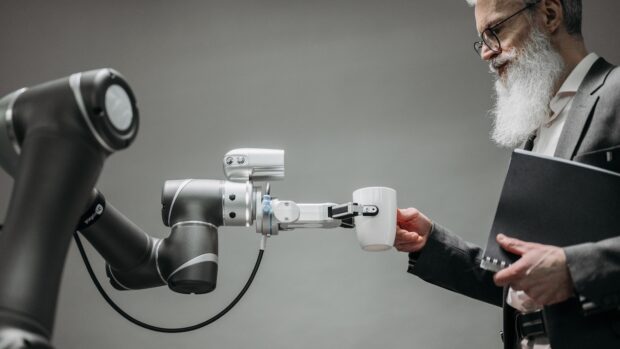University of California, San Francisco’s Medical Robots for Surgery
The University of California, San Francisco (UCSF) is at the forefront of training the new generation of surgeons with its state-of-the-art Da Vinci Surgical System. Within the medical community, these cutting-edge technologies have given rise to a new breed of healthcare professionals known as “robot surgeons.” UCSF has incorporated robotics courses into its surgery curriculum, further integrating technology into the field of medicine. This article will delve into UCSF’s medical robots for surgery, providing insight into their functionality and impact on the field. Additionally, we will explore the ways in which robots are revolutionizing medical education, with examples from other esteemed institutions.
How Do Medical Robots Work?
Wired magazine featured an article on the Da Vinci Surgical System and its use at UCSF. Alyssa Murillo, a fourth-year general surgery resident, had the opportunity to experience the system firsthand. Rather than observing traditional surgery demonstrations, Murillo was introduced to the Da Vinci Surgical System, which provided her with an immersive view inside a patient’s body through a video console. Murillo described the experience as “incredible,” highlighting the system’s unique 3D visualization capabilities.
The Da Vinci Surgical System itself is an impressive 8-foot-tall robot equipped with four surgical arms. It utilizes “straws” to access the surgical site and maneuvers minuscule instruments in and out of these tubes. With a camera held by one of its arms and a console operated by the surgeon, the robot mimics and amplifies the surgeon’s movements, offering unprecedented control and precision. This system disproves the common misconception that medical robots will replace doctors entirely. In reality, a lead surgeon oversees the robotic arms, while another medical professional assists at the bedside, ensuring human expertise and empathy are still integral to the process.
The use of robots in surgery is increasingly prevalent. According to the National Library of Medicine, the use of robotic surgery for general procedures has almost quadrupled from 1.8% in 2012 to 15.1% in 2018. With these statistics in mind, it is clear that medical education needs to adapt to this shifting landscape.
The Role of Robots in Medical Education
Alisa Coker, the director of surgery education at Johns Hopkins, refers to herself as a “robotic surgeon” due to her extensive use of the Da Vinci Surgical System. She notes that residents’ demand for robotics training has increased in recent years. Responding to this demand, Coker developed a curriculum to teach surgical residents about robotics, including a “boot camp” for robotic surgery. During this training, first-year students utilize robotic simulators to complete games and tasks, enabling them to gain essential skills in robotic surgery. Coker utilizes an app to track her students’ progress on the simulators.
According to Murillo, the simulators used in robotic surgery training feel somewhat reminiscent of video games. This raises the question of whether individuals with experience in video games may have an advantage in controlling medical robots. This intersection between gaming and healthcare education demonstrates the evolving nature of medical training.
In addition to robotics, advancements in virtual reality (VR) have also influenced medical education. Case Western Reserve University’s School of Medicine, in collaboration with Microsoft, has introduced VR headsets to allow students to explore the human body in detail. This technology removes the need for cadavers in anatomy courses, offering students an immersive and interactive learning experience. They can examine macro and microscopic levels of anatomy, merging the study of anatomy and histology into a single course.
Conclusion
Medical robots are reshaping the way doctors are trained and transforming surgical procedures. While these machines are powerful tools, they are ultimately under the control of compassionate and skilled healthcare providers. The incorporation of robotics into medical education ensures that future doctors are prepared to leverage these technologies to improve patient outcomes. As the field progresses, it is important to remain informed about these advancements and their potential impact on healthcare. To stay up-to-date on the latest trends in the medical field and beyond, visit Inquirer Tech.
Denial of responsibility! Vigour Times is an automatic aggregator of Global media. In each content, the hyperlink to the primary source is specified. All trademarks belong to their rightful owners, and all materials to their authors. For any complaint, please reach us at – [email protected]. We will take necessary action within 24 hours.


